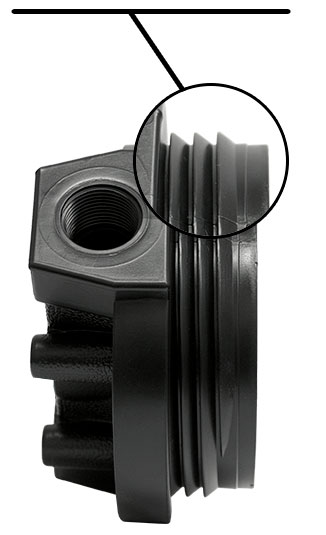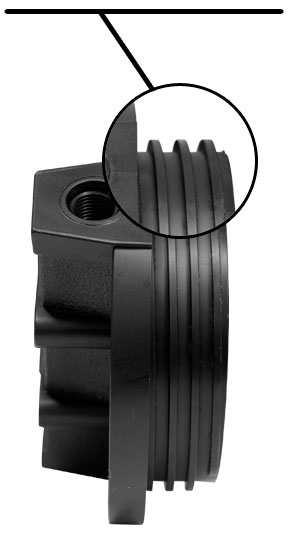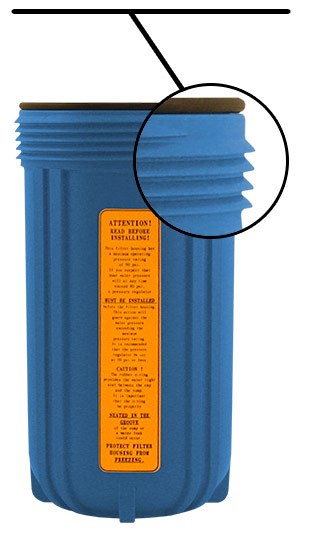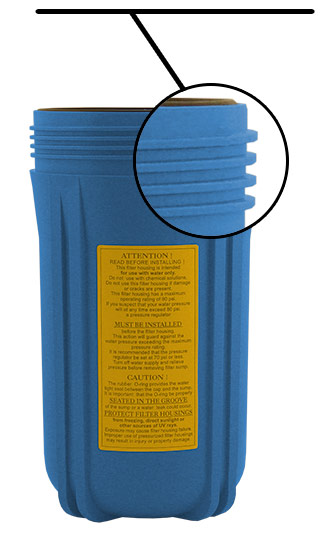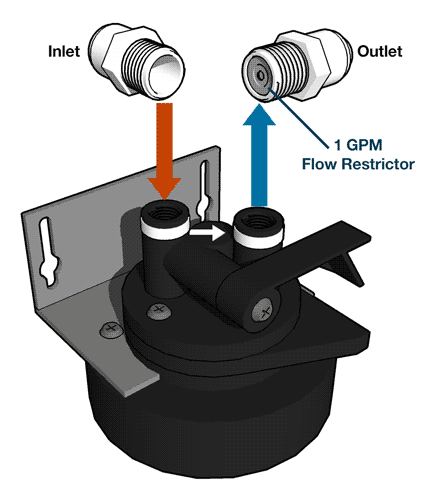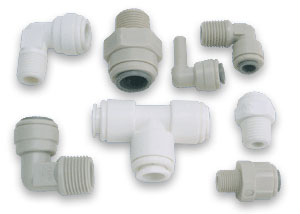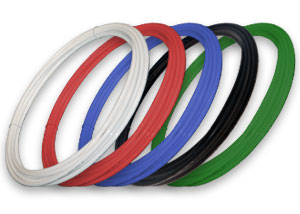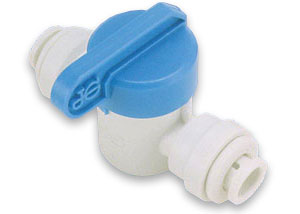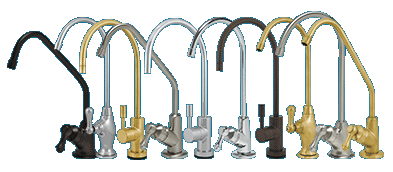Water — Its Effect on Laundering
By Robert McFaul
(click here to read a summary of this article)Water may look the same everywhere, but in reality it can have quite a different effect on the quality of your laundering, depending upon its hardness or softness.
Water has always been the most important commodity in any type or size of laundry. The effect of water and water quality is more critical today than ever before in the performance of cleaning products.
Water, whether from a private well or municipal supply, comes from two general sources: surface water and ground water. Surface waters include lakes, rivers, ponds, and reservoirs. Ground water is obtained from wells. When rain falls, it is nearly pure water, chemically. It is free of dissolved minerals, but it may contain dissolved gases from the air, which make it a weak acid. The rainwater dissolves mineral matter as it flows over and through the ground on its way to rivers, lakes, springs, and the ground water supply.
The dissolved matter may be a wide variety of minerals including calcium, magnesium, and iron compounds. In addition, movement of the water may stir up small particles of insoluble matter (turbidity) and cause a color change in the water. All of these materials carried by water cause problems in laundries.
Water Problems
Laundering problems are often caused by poor water quality and laundering techniques rather than by the equipment or cleaning products used. The best water for laundering is soft and practically free of iron, manganese, and turbidity, with no color. Soft water enables soaps and detergents to clean at maximum efficiency.
Water is expensive in laundry usage. The cost of buying the water and associated sewer charges to get rid of it typically exceeds all washing supplies combined. Based on several surveys, most laundries use between 2.5 and 4.4 gallons of water per pound of fabric. This is important when figuring the size of a water softener for a laundry.
Hardness in laundry water is a problem because the minerals that cause hardness interfere with the cleaning action of soaps and detergents. As a result, larger amounts of soaps and detergents are needed to counteract the minerals, and laundry results are not as good as when there is no hardness present.
Hardness minerals also react with carbonate builders commonly found in non phosphate detergents. The resulting product is a white precipitate, calcium and magnesium carbonate, that makes fabrics stiff and harsh and leaves a film on fabrics which tends to make colors appear faded or streaked with white. No precipitate is formed when the carbonate-built detergents are used in soft water.
How Soap Reacts
The difference in performance in hard and soft water is most dramatic when soap is used. Soap reacts with the calcium in hard water to form sticky curds: hence, there must be more soap than is needed to react with all the calcium in the water before it can start to clean. Consequently, more soap is needed for cleaning in hard water than in soft water. The soap curds formed by the reaction mentioned above are a problem in laundering because they cling to clothes and trap soil on fabrics.
In recent years there has been renewed interest in soap, but because soap is more sensitive to water hardness than detergents, soap should be used only in soft water. Rinse water should be softened as well as wash water to prevent soap curd formation and to eliminate chemical and detergent residue in fabrics.
It is well known that it is more costly to get quality washing in hard water. As a rule of thumb, it takes an additional 1½ pounds of soap per 1,000 gallons for each grain of hardness. For example, if there were 10 grains of hardness in the wash water, an additional 15 pounds of soap would be required for each 1,000 gallons.
Iron causes staining of fabrics. Iron stains are yellow to orange in color. The color cannot be removed by bleaching; in fact, bleaching with chlorine might increase staining. Iron may enter the water as it passes through the earth or it may come from rusting pipes or water heaters. Very small concentrations can cause troublesome staining of fabrics. Iron can be removed by the ion exchange process in varying amounts with a water softener. Thus, when both hardness and iron are present, it may be possible to solve the problem with just one piece of equipment.
The presence of manganese in laundry water is relatively rare, but when it is present, brown stains occur. Contingent upon the amount of manganese, a softener is able to eliminate the staining problem.
Water can be softened automatically by cation exchange (mechanical) water softeners. Water which has been softened by cation exchange still contains dissolved minerals, but there is no calcium or magnesium present. Mechanical water softeners require an initial investment and small operating cost. In many areas, it is possible to rent equipment for a small monthly charge, thus avoiding the initial investment. Long-term savings resulting from reduced use of cleaning supplies and from longer life of fabrics and water-using equipment offset the cost of buying or renting water softening equipment.
Cation exchange water softeners must be regenerated periodically to provide a continuous supply of soft water. The fully automatic regeneration requires no attention from the owner other than keeping the brine tank filled with salt. Rented equipment may be the fully automatic type or may be a tank, which is exchanged periodically by the supplier. Called portable exchange service.
Regeneration of softeners can be done manually or automatically. Automatic regeneration is handled by either a time clock or a sensor control system. With the time clock, the softeners are regenerated at predetermined intervals. With the sensor, the softeners only regenerate when needed, thus saving both salt and water. With sensors, the softeners are fitted with probes that sense the difference between hard and soft water, so that as the softener resin becomes exhausted, the softeners go into regeneration. In effect, it compensates for any water usage or hardness variance. Savings both in salt (up to 47 percent over a time clock softener) and water are the benefits of using a sensor.
Effect on Detergents
Both soaps and synthetic detergents do a better cleaning job in soft water, and in hard water the performance of soap is impaired more that synthetic detergents. Some feel this is a plus for synthetic detergents and have become careless about controlling water hardness. As a result, many laundries have water-softening systems that are either not used or not properly maintained.
Whether washing is done with soap or synthetic detergent, maximum savings of these materials will be realized when the water is zero grains hardness. In earlier days, using untreated hard water could be tolerated by adding more detergent at an overall lower cost than keeping the softener on stream. At today’s prices, together with other considerations that now exist the “add-more-detergent” philosophy is no longer a valid approach.
A more careful evaluation my reveal that it would be even less costly to bring a softener on stream and use a good soap. Add to this the fact that a higher quality wash may result, and the idea becomes more attractive. Since the ban on phosphates is becoming more widespread, this is another reason for softened water. The primary purpose of phosphates in detergent is to soften the water. It has been proven that softened water provided excellent laundering with or without phosphates.
Soft water Increases Linen Life
Since softened water does a better job of cleaning, it is easier on washables. For example, the life of linens is almost doubled. In one documented study, after new sheets were washed 135 times in hard water, they had to be discarded. In softened water, new sheets withstood 250 washings.
Energy Conservation and Cost
An area of increased importance to all laundries is the rising cost of energy. Water conditioning can conserve energy for the laundry in the following ways:
- Reduce boiler fuel waste. Hard water (3.5 grains or higher) deposits a rocklike insulating scale inside boilers, water heater tanks, and coils. This causes wasteful and unnecessary consumption of electricity, gas, or oil.
- As little as 1/8″ of scale can result in a 16 percent increase in fuel costs. By utilizing a water softener, and chemical treatment, if needed, the scaling problem and resultant energy waste can be eliminated.
- Reduce water level. An effective method of reducing energy costs is to lower the water level in the machines. The cost of both the water and the fuel necessary to heat it can be saved by reducing the wash water levels by as little as one inch. For example, a southern industrial laundry lowered the water level in its two washers by one inch. This was a reduction of about 6 percent of the total volume of water previously used in the washers. 535,000 gallons of water and 7,258 therms of gas annually were eliminated in each washer. The total first year cost savings (both washers) was 2,997. The cost of implementing the water level reduction was negligible, as a minor change in the formula card was all that was required. Payback, therefore, is immediate. Over a ten-year period, the savings would amount to $50,540 — quite a savings on just one inch of hot water.
Conclusions
There are six important benefits in properly conditioning water:
- Wash cleaner. All fabrics come cleaner when they are washed in softened water and the correct soap and or/detergent. Hard water impurities become imbedded in fabric weaves, making fabrics rough and stiff. Whites tend to turn gray, colors fade. Hard water also permits the accumulation of soap curd, which must be rinsed clear in order for fabrics to come clean. Soft water eliminates these problems.
- Save water. Softened water, with its reduced hardness and less soap curd, permits you to wash fabrics cleaner with less rinsing. Thus, it is often possible for a laundry to eliminate one rinse cycle completely, with no loss of laundering efficiency. Water savings can be considerable; if a 600-pound washer uses 150 gallons per rinse, and is cycled through eight times a day, you can save 6,000 gallons. That’s 25,000 gallons per month, or 300,000 gallons per year, an easy figure to translate into dollar savings. And that’s on just one washer!
- Conserve energy. If you eliminate one hot rinse cycle, you reduce the energy necessary to heat that water. Using the 150 gallons example above, and applying a heating cost of 0.28¢ per gallon, it costs 42¢ to heat the rinse water. By eliminating the rinse cycle, you thus save $3.36 per day (42¢ × 8 cycles), or $16.80 per week, or $873.60 per year. That’s based on current energy prices, and on one wheel only. When hard water scale builds up in your water heater, you must heat the scale before you can heat the water. That’s an increase you don’t need — and can eliminate with soft water.
- Reduce supply costs. With softened water, less laundry bleach is needed, and chemical softeners are not required. Soaps can be used instead of detergents, which have built-in chemical cleaners. Many of these are formulated either with phosphates or chemicals to buffer water hardness. Experience shows that total supply costs can be reduced as much as 50 percent. Your savings will depend on your present usage level of chemicals, which is directly related to the quality of your water.
- Reduce linen replacement cost. If yours is an in-house laundry, you’re concerned with linen replacement costs. Two things cause fabrics to wear out — mechanical action of washing and chemical action. By using soft water and eliminating one rinse cycle, you reduce mechanical action. By cutting back on bleaches, detergents, and other chemicals (most of which you don’t need with soft water), you reduce chemical action. You can expect linen replacement costs to be reduced up to 40 percent; once again depending on the amount of chemicals you’re now using, and the quality of your water.
- Reduce repair and maintenance costs. Every water-using appliance can suffer hard water damage. Hard water scale clogs pipes and nozzles, damages valves and pumps, impairs machine efficiency. When hard water puts a wash wheel down for repairs, that means lost production as well as repairs. Machine life can also be materially shortened, which means more frequent replacement of costly capital equipment.
Glossary of Terms
Corrosion (Rust) – The eating away of metal parts. The most noticeable effects of corrosion are leaks, flow stoppage, valve failure, and pitting.
Hardness – Dissolved calcium and magnesium salts in water. Compounds of these two elements cause pipe-scaling problems. They also form a curd with soaps and detergents, reducing their cleaning effectiveness.
Iron – Causes staining in laundered fabrics and on fixtures. Yellow to orange in color.
Manganese – Similar to iron in its tendency to stain. Stains are more severe when chlorine bleaches are used.
pH – A number denoting the alkalinity or acidity of an element such as water. The pH scale is from 0 to 14; Numbers below 7.0 indicate acidity and above 7.0 indicate alkalinity. 7.0 is neutral.
Soft Water – Water containing unobjectionable quantities of calcium and magnesium salts.
Tannin – Complex organic material that usually discolors water similar to iron, but doesn’t stain.
Turbidity – Undissolved and suspended material in water, such as finely divided particles of sand.

